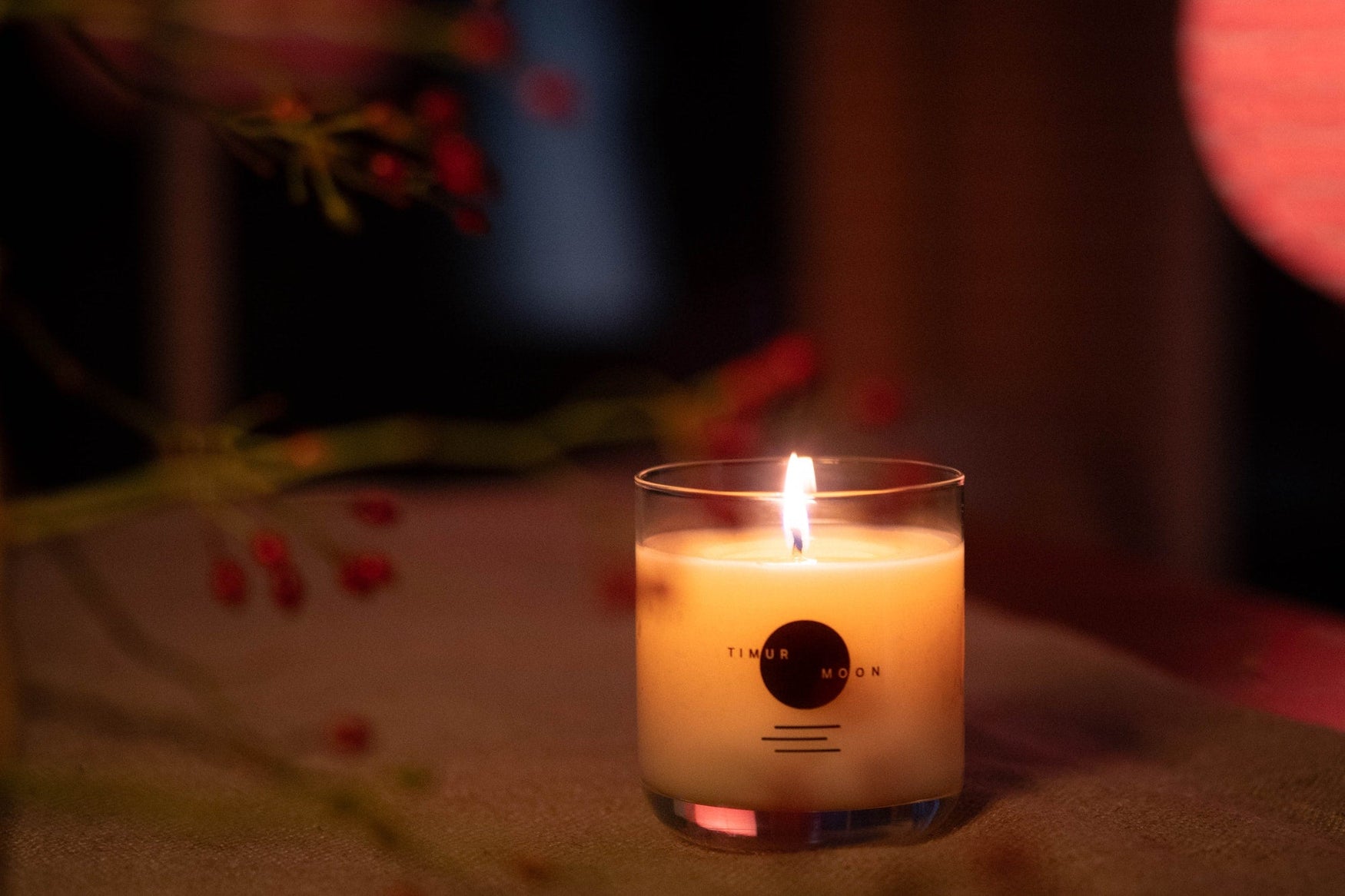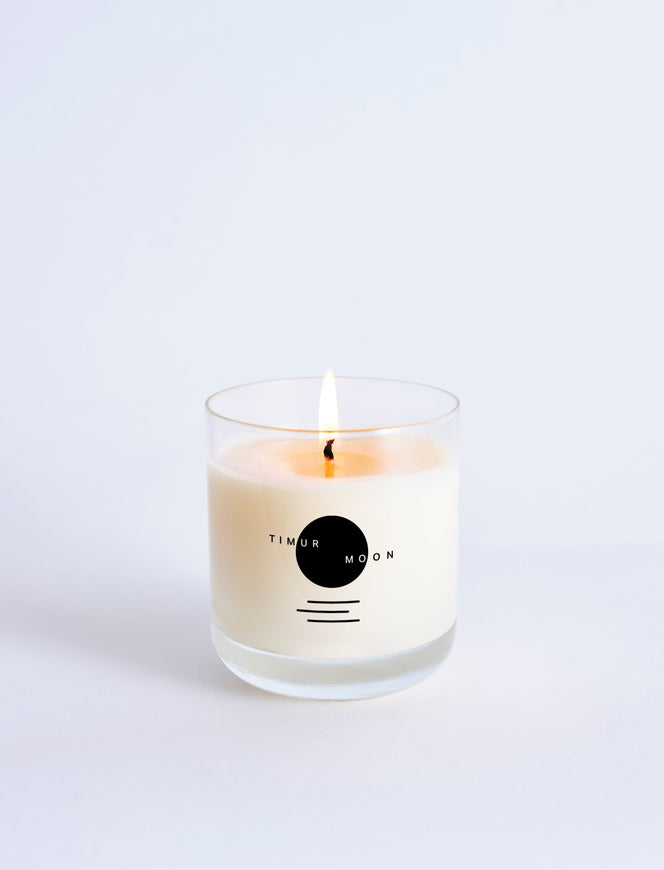Creating a warm and inviting atmosphere in your home often comes down to the subtle details. Natural luxury candles are an excellent way to enhance your space, offering not just beautiful scents but also a touch of elegance and warmth. But with seemingly so many options available, how do you choose the perfect one? This guide will walk you through the key factors to consider.
Understanding Natural Candle Waxes
The type of wax used in a candle significantly impacts its burn quality, scent throw, and environmental impact. When it comes to natural luxury candles, here are the options you'll typically encounter from premium providers.
Paraffin Wax
Paraffin wax is a non-renewable commodity material. In fact, it is a direct product of the petroleum refining process, making it an environmentally unsound choice for a consumable product.
Paraffin is the most commonly used candle wax on the market because it is the cheapest. It throws scent strongly but burns down faster than other waxes. Beware inflated candle burn times with this wax.
"Despite these environmental and quality concerns, many mainstream luxury candles brands still use paraffin wax. Paraffin is not considered natural under any reputable definition."
Some have expressed concerns about the safety of paraffin wax for the end candle user. Our sense from reading all the research is that risk is low if you are burning candles recreationally—and the risk increases if you are someone who burns many candles at a time all the time. Regardless, we also find paraffin wax often contributes a mild unpleasant, plastic-like odor that lessens the enjoyment of a luxury fragrance.
Despite these environmental and quality concerns, many mainstream luxury candles brands still use paraffin wax. Paraffin is not considered natural under any reputable definition.
Soy Wax
Soy wax is the second most commonly used wax for scented candles in the United States. It is also a commodity material, meaning when candle brands buy soy wax from a distributor, there is no ability to know the provenance of the raw material: it's all mixed together anonymously.
Superficially, soy wax is a more sustainable choice than paraffin as soybeans are a natural, renewable resource. However the giant soybean industry is very concentrated and controlled by large chemical conglomerates, led by Monsanto.
"The giant soybean industry is very concentrated and controlled by large chemical conglomerates, led by Monsanto."
Some candle makers tout the "Made in America" nature of their soy wax, conjuring pictures of smallholder farms, growing organic soybeans and hand-processing it to create your candles. The reality is the exact opposite, with massive scale industrial, fully mechanized monocultures and unhealthy amounts of chemical pesticides and fertilizers to support homogenous, genetically-modified crops.
The environmental cost of these practices is unfortunately starting to add up—though we would caution readers to consider that these are a feature of most products in our current economy, and not specific to candles.
These practices make soy wax very cheap for candle makers, only slightly costlier than paraffin.
In terms of performance, soy wax candles tend to burn slower than paraffin wax candles, meaning you can enjoy their fragrance for longer. They also produce less soot, contributing to cleaner air in your home. However, soy wax may not retain fragrances as evenly as some other waxes, meaning you find the throw weak at first and increasing as you burn down the candle.
Soy wax also is considered by some to have an unsightly appearance, but across all dimensions it can be considered a marginal upgrade over paraffin.
Coconut Wax
Coconut wax is a wax created from a majority blend of "high-melt" coconut oil and other plant-based waxes. The candle industry has traditionally overlooked it because it is two times more expensive per pound. Coconut oil is obtained via a simple extraction process; the wax burns slowly and throws scent extremely well.
Coconut wax with high coconut oil content is an excellent natural option. It offers a creamy, luxurious texture. Coconut wax candles are known for their exceptional scent throw, effectively filling a room with fragrance. They also burn cleanly and slower than soy wax.

A coconut wax slab in all its glory. (Photo: Keap / Dan Abary)
Blending coconut oil with other materials is necessary for the wax to be hard enough to perform as a candle. However, many candle brands advertise a "coconut wax blend" that only contains a nominal amount of coconut oil — the balance being much cheaper paraffin or soy wax.
Genuine coconut wax (we would call it "genuine" if coconut oil is the primary ingredient and only contains 100% renewable raw materials) is significantly costlier than paraffin or soy, but the performance in our opinion is far superior making it an appropriate choice for natural luxury candles.
If shopping for coconut wax blend candles, be sure to find out how much coconut oil is in the blend and whether it is contaminated with paraffin.
Beeswax
Beeswax comes from the hives of honeybees, and it is, in many regards, one of the more sustainable options. It has a characteristically honey-like scent and a golden color. This makes it wonderful as a standalone candle wax but challenging to incorporate into scented candles. Bleached (white) beeswax is available but presents issues with "scent trapping," leading to sadly scented candles with very little scent-throw. Beeswax is also 3-4 times more expensive than other waxes due to the low yield and related expenses of maintaining bee colonies.
This scent trapping aspect makes it an unlikely carrier for luxury fragrances. However, we have found it to be helpful to our own wax blend's performance as a natural additive—in restrained quantities.
In practice, sustainability of beeswax supply chains can vary tremendously — from extractive, cruel and environmentally devastating industries to purposeful smallholder organic and regenerative farms. Learn more about your candle maker's practices if you're considering beeswax candles.

An assortment of natural wax raw materials used in candles. (Photo: Keap)
Other waxes
Aside from palm wax, you might find a variety of other waxes mentioned, including blends that advertise themselves as "apricot wax blend" or "orange peel blend". While an apricot wax sounds great (who doesn't love an apricot?), in our experience these types of blends only include nominal amounts of the "fun" material, and are essentially a gimmick to greenwash a paraffin or soy wax product.
Learn more about the behind-the-scenes of natural candle waxes.
Selecting the Perfect Scent
The scent of a candle is perhaps the most personal aspect of choosing one. Consider the mood you want to create and the spaces where you'll be burning the candle.
Understanding Scent Families
Fragrances are often categorized into families. Familiarizing yourself with these can help you narrow down your choices:
- Floral: Think of classic scents like rose, lavender, and jasmine. These are often considered uplifting and associated with romance.
- Woody: Earthy and grounding scents such as sandalwood, cedarwood, and pine create a sense of warmth, comfort and coziness.
- Citrus: Zesty and refreshing notes like lemon, grapefruit, and bergamot are often energizing, invigorating, and clarifying.
- Spicy: Warm and inviting aromas like cinnamon and pepper can add a layer of intrigue and warmth.
- Aromatic: Ingredients like sage, mint and rosemary can be both grounding and refreshing.
There are many more scent categories to explore. Part of the fun of luxury natural candles is in discovering plants and aromas that you have never experienced before.
Considering the Room
The size and purpose of a room can influence your scent selection. Lighter, fresher scents might be ideal for bathrooms or kitchens, while warmer, darker fragrances can create a cozy ambiance in living rooms or bedrooms.
Exploring Scent Intensity
Few scented candles can claim to be all-natural by any legitimate definition. An unfortunate reality for most of them is that their scent throw is on the weaker side.
A subtle scent may be perfect for small spaces or for creating just a hint of fragrance.
However, with a high budget and deep expertise in natural ingredients and candle science, it is possible to formulate wonderful natural scents with vigorous scent throw that can easily fill a large room. You can explore Keap's Full Circle Collection to find luxury natural candles with strong throw, and find your perfect match.
Consider your preference and the size of your space when making your choice. A strong candle can also provide a subtle scent in small spaces by being left unlit.
Choosing the Right Vessel
The vessel of a natural luxury candle is more than just a container; it's an integral part of the candle's aesthetic appeal and can affect its burn.
Material and Style
Candle vessels come in various materials, including glass, ceramic, and metal. The style can range from sleek and modern to rustic and traditional. Choose a vessel that complements your home décor and personal taste.
Many brands choose to have opaque vessels. This is beneficial in order to hide sloppy work when the manufacturer practices are not robust. However it prevents the flame from being visible as the candle burns down. If you value the ambiance and companionship of a candle, opt for a translucent or clear candle vessel.
Size and Burn Time
The size of the vessel often correlates with the amount of wax and the expected burn time. As a general rule, larger candles will generally burn for longer and may also have a stronger scent throw.
"Because of the overlapping burn pools from each wick, multi-wick candles must either over-burn (meaning they burn down too fast) or tunnel (leave lots of unburned wax on the edges)."
However, beyond roughly 3 ½ inches in diameter, you will face performance issues. Very wide candles cannot burn adequately with a single wick, so multiple wicks are typically used. However, because of the overlapping burn pools from each wick, multi-wick candles must either over-burn (meaning they burn down too fast) or tunnel (leave lots of unburned wax on the edges). Either way, you are getting "less candle" as you burn your multi-wick product than by having multiple appropriately sized candles.
Votive size candles can be good options for bathrooms, while rocks-size (7-10 oz.) vessels can potentially work well for small and large rooms.
Origin
Consider the origin of the candleholder to better understand its sustainability, safety, ethicality, and repurposing potential.
Most luxury candleholders, of all materials, are mass-produced in China or Southeast Asia, often in questionable conditions. They are in widespread use because they are cheaper than more ethical options, despite the high freight costs to ferry them around the world. Their significantly lower price is a reflection of the unpaid cost for their social and environmental externalities.
Glass vessels are produced around the world. In our experience, the highest quality manufacturers are in Japan, Germany and the Czech Republic. Sadly, we don't have high quality glass manufacturers in the U.S. at the moment (though we do have a burgeoning glass-blowing artisan niche).
Look on your candle's website for information on the origin of the glass. If you find no information, ask their customer service. If they don't provide specific information, it's safe to assume it is a low quality mass-manufactured glass from a faraway supplier.
Repurposing Potential
Many high-quality candle vessels can be repurposed once the candle has burned down.
Consider if the vessel is something you'd like to keep and use for other purposes, such as storing small items or as a decorative piece.

High quality candleholders can live on as your favorite home objects (Photo: Keap / Al Culliton)
Here are a few tips when considering a natural luxury candle purchase, with repurposing in mind:
How easy will it be to repurpose?
- Wick removal: most candlemakers use high bond petroleum-based glue to adhere the wick to the vessel base. This makes it a big struggle to remove the wick at the end of the candle. Look for candle makers who use beeswax as their adhesive. Beeswax as an adhesive is strong enough to hold the wick in place during the candle's life, but is much easier to remove by hand after the final burn.
- Label removal: check whether any labels on the vessels are made from a removable stock. Most candles use cheaper high bond labels. These can be removed, but require a lot of time scrubbing with soap and various brushes. Look for candles made with removable labels, which will come off easily.
"Regardless of what kind of candle it contained, if properly and fully cleaned out, the fact that it contained a candle at one point does not create any danger for the user."
Is the brand information removable?
- There may be some cases where you may be happy to have the candle brand name etched or printed forever on your vessel. However, in most cases, vessels like these are less desirable forever objects. Your guests may find it offputting to be visually reminded that their drinking glass recently contained a candle (even though this is perfectly safe). Beyond that, it is a matter of personal taste whether you want your house to be filled with brand advertisements.
Is the vessel safe to use for drinking?
- Regardless of what kind of candle it contained, if properly and fully cleaned out, the fact that it contained a candle at one point does not create any danger for the user.
- However, consider whether any paints were used to decorate the glass. As a general rule we recommend only using as drinkware painted cups where the brand self-manufactures and can provide guarantees that the materials used are food-safe. In our experience contract manufacturers, especially in lower cost countries, do not necessarily seek out food-safe paints.
Keap Candles offers beautiful vessels designed to be reused with ease and enjoyed as drinking glasses long after the candle is finished. Learn more about their stylish options at https://keapcandles.com/.
Frequently Asked Questions (FAQ)
What are the benefits of natural candles?
Natural candles, such as those made from soy, coconut, or beeswax, typically burn cleaner with less soot, are often made from renewable resources, and can often be more sustainable compared to paraffin wax candles. However, "natural" is not a regulated term and it can be misused by many brands, requiring customers to be diligent in their research.
How can I make my natural candle last longer?
To prolong the life of your natural candle, trim the wick after each burn according to the manufacturer's specifications. Avoid burning the candle for more than four hours at a time. Keep it away from drafts and direct sunlight, and allow the wax pool to reach the edge of the vessel during the first burn to prevent tunneling.
Are natural candles better for the environment?
Generally, yes. Soy and coconut waxes are derived from renewable resources, and beeswax is a natural byproduct. They are also biodegradable. Paraffin wax, on the other hand, is a byproduct of petroleum.
How do I choose the right scent for my bedroom?
For bedrooms, consider a scent that you find calming and relaxing. Aromatherapeutic ingredients such as lavender are often considered to have these properties, however scent preferences—and therefore the impact on our mood—are highly personal.
What does "scent throw" mean?
Scent throw refers to how well a candle's fragrance fills a room when it's burning (hot throw) or when it's unlit (cold throw). Coconut wax is known for its excellent scent throw.
How do I safely burn a natural candle?
Always burn candles on a stable, heat-resistant surface. Keep them away from flammable materials, children, and pets. Never leave a burning candle unattended. Trim the wick regularly and avoid burning the candle all the way to the bottom of the vessel.




